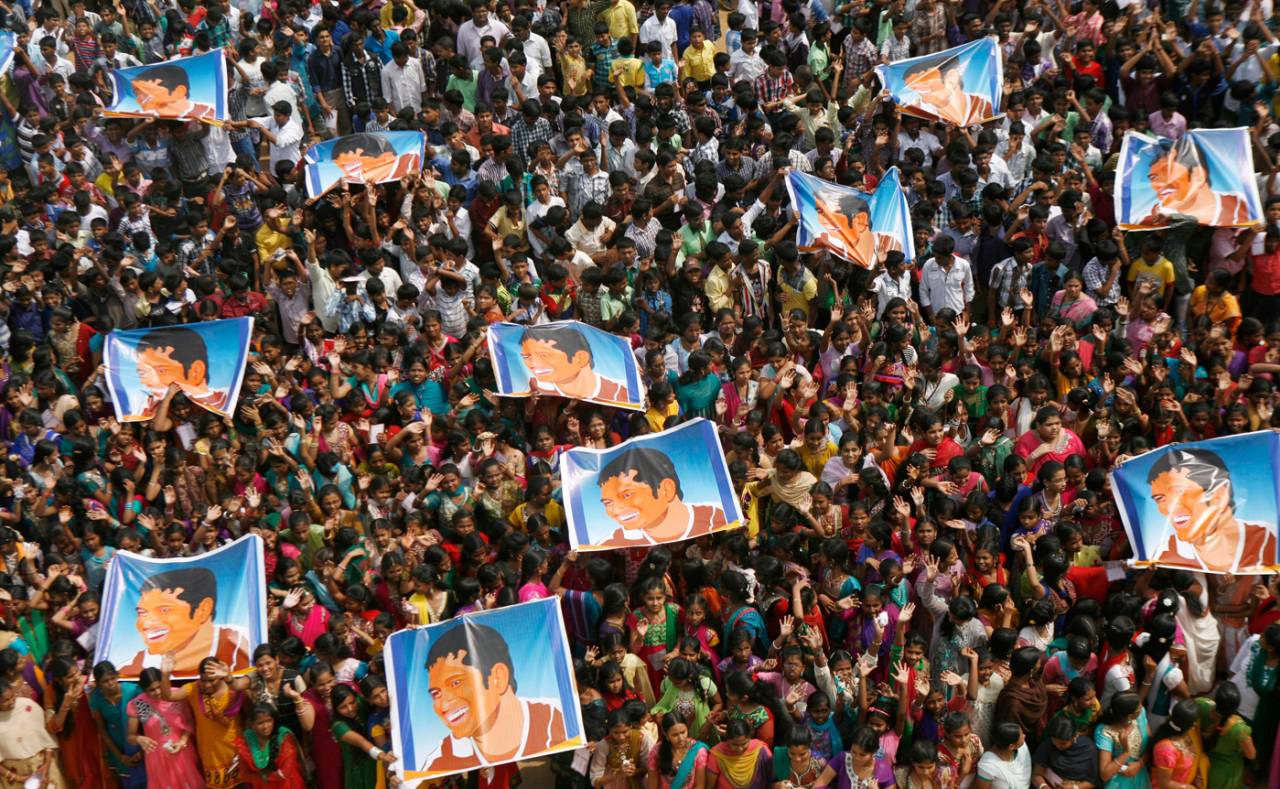More power to India
The Indian cricket fan single-handedly sustains cricket. It's only fair that he has a proportionally bigger say in how the sport is run
Mohandas Konanoor
24-Jan-2014

What's fair about the Indian fan - who almost single-handedly sustains the sport - getting a fraction of the opportunity that a fan from New Zealand gets to watch a match live? • Associated Press
There has been a lot of criticism of the proposal to restructure the ICC and concentrate most of the decision-making powers in the hands of three boards - BCCI, ECB and CA. Most of the criticism is based on the argument that this is not egalitarian, that this creates an oligarchy. The implicit assumption behind this argument is that the current system of 'one nation, one vote' is somehow egalitarian and democratic. I want to question that assumption in this article.
I am sure we all agree that the real stakeholders of the game are the fans. It is the fans who bring money into the game and it is the young fans who take up cricket today who become the future international players. So, we should be measuring equality at the level of individual fans, not at the level of nations. So what we should be concerned about is not whether every board has an equal vote in the ICC, but whether every fan is treated fairly and equally by the system. When looked at from that perspective, it becomes clear that the present system is anything but egalitarian. Consider this: Mumbai's population is 12 million whereas New Zealand's is around 4 million. Mumbai is far more cricket-crazy than New Zealand. Yet, Mumbai hosts at most one Test or ODI per year (3 Tests and 2 ODIs in last 5 years), whereas New Zealand hosts a dozen international matches every year (21 Tests and 38 ODIs in last 5 years). Where is the justice in that? Given its population and cricket-craziness, Mumbai should be hosting five times the number of matches that New Zealand hosts.
At least the metros in India get one game per year. Tier 2 Indian cities like Surat, Jaipur, Nasik, Nagpur, Lucknow, Kanpur, etc. - each with million plus cricket-crazy fans - don't even get that one game per year. As the IPL has shown, each Indian city can fill a stadium for 8 games over a period of 6 weeks. Then, why should we continue with this international system which gives them at most one game in a year? Shouldn't we instead move to a system that is capable of satisfying the huge demand for cricket that exists in India?
It is not just in the allocation of matches that India gets penalized by the current system. India accounts for 80% of global cricket market, which basically means hundreds of millions of dollars are going out from Indian economy to the ICC and other boards all over the world. India may be a huge cricket market because of its population, but on a per-capita basis we are still very much a poor country. Between corruption and inflation, we have enough problems managing our economy. The last thing we need is our favourite national pastime also to add to our economic burden. So a system that keeps much of the money generated by the game within the country will be most welcome.
The obvious solution is to create more teams within India and encourage people to watch matches between those teams. IPL has already done that for T20, but we should expand it to other formats too. The question then becomes - what happens to the other national teams? Two possibilities emerge - the other two big markets (England and Australia) could follow the Indian model whereas the remaining countries will simply supply players to these three leagues. Alternatively, we could have a mixed league of say, ten Indian teams and five-six other national teams competing together. The first objection that everyone has to this proposal is: "What about the quality of those ten Indian teams? India currently struggles to produce one halfway decent team, how are they going to produce ten?" The reality of the situation is that India currently produces one team because that's all they are required to do. Give them time, and allow for movement of players, and producing ten teams isn't as hard as we imagine it to be.
In any case, it is imperative that we must move away from the existing international system. The first step towards that is to restructure the ICC to reflect the actual market sizes and to get rid of this one-size-fits-all FTP.
If you have a submission for Inbox, send it to us here, with "Inbox" in the subject line